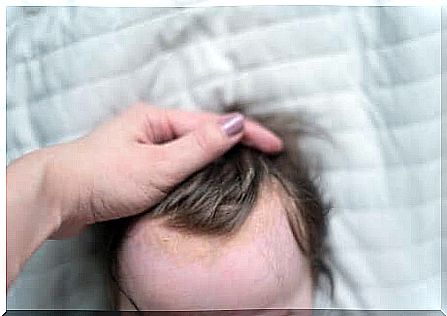The Most Common Skin Irritations Of The Newborn

Every parent should know about the newborn’s skin irritations. These are diaper rash, neonatal acne, cradle cap, atopic infant dermatitis and miliaria or sudamine.
In the following lines we describe its main characteristics, as well as the results provided by some recent studies. Finally, we offer you some simple and effective tips that can help you prevent these skin disorders.
The skin of the newborn

The skin of the newborn is very different from that of the adult. It is thinner, has less hair and produces little sweat and less sebaceous secretions. These differences are even more evident in premature babies.
The exposure of this delicate skin to the climate, bacteria and possible contact injuries makes it very vulnerable during the first months of life. For this reason it requires specific and constant care.
The most common skin irritations of the newborn
Infant skin irritations are generally not a serious condition. Nonetheless, they cause parents anxiety and worry.
In the presence of any symptoms, you should always contact your doctor, because some diseases can manifest their symptoms through the skin. In these cases, it is essential to have an early diagnosis.
1. Diaper rash

Despite great advances in absorbent diaper materials, even hypoallergenic ones can irritate the developing baby’s skin. Moisture and contact with feces facilitate the onset of diaper rash.
A recent study published in the journal Pediatric Dermatology shows the relationship between most cases of diaper rash and Candida albicans fungal infection. However, he also notes that this type of dermatitis is less common in breast-fed infants, suggesting that this habit be adopted as a preventive measure.
2. Skin irritations of newborn neonatal acne
Neonatal acne usually appears during the first few months of life. In most cases, it is a benign and temporary skin manifestation, as reported in this article published in Protocolos de dermatología . In some cases, however, a more severe hormonal imbalance may occur.
This type of acne appears on the forehead, nose and cheeks and can be associated with the presence of the Malassezia fungus . To calm the symptoms, a topical lotion is prescribed and treatment usually takes a couple of weeks.
3. Milk crust

Cradle cap is a form of seborrheic dermatitis that affects the newborn during the first three months of life, as explained by a study published in Dermatología médica, cosmética y quirúrgica . This disease causes lesions on the scalp in the form of oily and scaly crusts, as well as redness.
It typically goes away on its own, but healing can be promoted by applying olive oil to the affected area. However, some cases require medical intervention, so it is always best to consult your pediatrician.
4. Infant atopic dermatitis
One in ten infants can suffer from this disease during the first three months of life. This type of dermatitis usually appears on the cheeks, neck and arms.
The cause is an alteration of the sebum which hinders the protective function of the skin. This imbalance causes redness, itching, and dryness, which can cause the baby to scratch and injure himself.
It is recommended to use gentle and natural soaps, as well as vegetable oils that help replenish the protective barrier of the skin. In this case, olive or almond oil could also be used, but only after consulting a doctor.
5. Miliaria or sudamine, among the skin irritations of the newborn
This skin disorder affects 40% of newborns, in most cases during the first month of life. However, it can appear at any age, especially in places with a humid and hot climate.
The cause of the miliaria is an obstruction of the pores that lead to the sweat glands preventing the elimination of sweat, as an informative article from the World Health Organization (WHO) points out. This condition causes small red or white boils, or even blisters, to appear on the face, neck or back.
Generally the miliaria heals without the need for specific treatment. To prevent its occurrence, it is best to avoid exposing the baby to excessive heat and to choose clothing made of natural materials, such as cotton.









